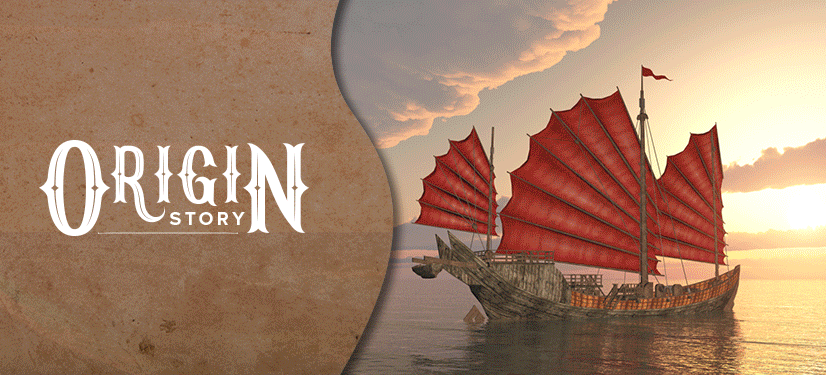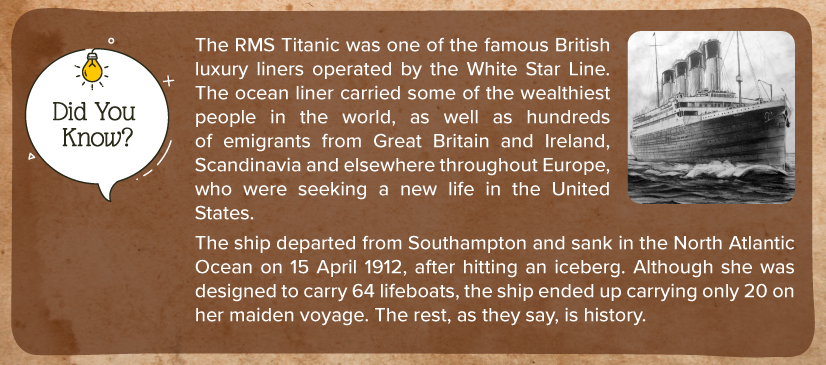Sailing through history: A lookback at the origin of ships
Welcome back to yet another interesting #Origin Story. So far, you have explored the origin of some popular board games, learnt about the history of famous toys, and came across some beautiful accidental discoveries. This month, we will take you on a long tour across the world via one of the world’s oldest modes of transportation – ships!

Did you know that ships have the oldest and the most uncanny history of all time? Besides being the prime reason for Columbus’ successful voyages, or for the Chinese to introduce a compass for maritime navigation, ships have been an essential constituent of human history. From ancient vessels like hollowed-out logs called dugout canoes and wind-driven ships like the Roman Triremes, to modern-day behemoths like nuclear-powered supercarriers, ships have gone through a major evolution over a period of centuries.
Today, as we rewind some key moments in the history of ships, we will also explore how our forefathers used to cross water bodies, who came up with the idea of shaping a boat, and how boats transformed into huge ships over time.
So get onboard, as we set sailing.

©Giphy
Once upon a time
The earliest version of a ‘boat’ was the Pesse Canoe, a three-metre long vessel carved out of a single log. Dating back to around 8,000 BCE, it came much before the Iron Age, or the invention of scripts, or even the rise of kingdoms.
The ones who built the pesse canoe were not just acknowledged for their boat-building skills. They were also known for their strength and survival instincts, which make up for an interesting read when studying the maritime history of that time. For instance, a pesse canoe did not have simple oars. Instead, people used their hands to paddle under their own weight.

Pesse Canoe, one of the earliest version of boats.
Prehistoric rafts
You can say that anything that could be lashed (tied) together to float was made into rafts that served as boats. Using only primitive cutting tools, and raw materials like logs of bamboo, bundles of reeds and air-filled animal skins, people back then made several versions of boats in order to traverse small water bodies.

Prehistoric rafts made of logs of bamboo
The Egyptian ships
Historical evidence of similar makeshift ships was also found in Egypt from the 4th millennium BCE. They used these ships for hunting, fishing and travelling across the Nile River.
A fair share of credit goes to them for inventing sails that took manual paddling out of the equation. These sails were made by lashing together and sewing small pieces of wood. With these advanced sailing cargo ships, they could embark on longer journeys and carry a heavy load in their vessels.

An ancient Egyptian papyrus showing a boat on the Nile River. ©Keith Wheatley/Fotolia.com
Contribution of Phoenicians and Vikings
Around 1550 BCE, the Phoenicians were considered the pioneers of the wooden sailing vessels that were meant to sail to high-sea countries later. They fashioned out galleys in their vessels and had sails and oars to provide the necessary power. These galleys were used to fight as well as trade with neighbours.

Galleys used by the Phoenicians fro maritime trade
Gradually, as the galleys grew larger, specifications were made to add rowers at two levels to move the vessel faster. The Greeks and Romans called these the biremes. Later on, they developed triremes that are galleys with three banks of oars.

Later, around 1000 AD, the Vikings started to build longboats that were large ships consisting of sails and oars. These ships would require up to sixty men whose only job would be to row the ship.
By 800 AD, hulk came into vogue. (No, not the Marvel superhero) Hulks were ships designed by developing countries in Europe and were used primarily as a river or canal boat, with limited potential for coastal cruising.

©Giphy
Interesting, isn’t it? Let’s move on to Asia and see how different vessels were used in Asian waters.
The development of boats and ships happened at pretty much a parallel pace when it came to European and Asian countries. During the Mongol invasions of Japan in 1281, the Japanese used defensive naval techniques to defeat the Mongolians.
The Chinese junks!
Around 1100 AD, the Chinese began to use boats that they called junks! These boats featured a rudder, for steering, in addition to watertight compartments and battens located on the sails that served to make them much stronger. These were mostly used for trade, transportation and for fighting wars.

Chinese junk ships had many uses in ancient Chinese culture, including fishing, transportation, trading, warfare and the exploration of Southeast Asia. Along with its innovative rudder steering system, they were built to withstand rough seas, to be easy to maneuver, and to move quickly.
The Age of Discovery
A lot happened across the world between the 15th and 17th centuries.
Japan introduced the world’s first ironclad called Tekkōsen (meaning iron ships). In China, the Ming dynasty assembled one of the largest and most powerful naval fleets in the world for the diplomatic and power projection voyages of Zheng He.
By the end of the century, Portuguese explorer Vasco Da Gama, and Italian explorers, Christopher Columbus and John Cabot, had made their revolutionary journeys. Their voyages connected European countries with Asia and introduced new global trade routes.

Vasco da Gama was known for being the first to sail from Europe to India by rounding Africa’s Cape of Good Hope. Over the course of two voyages, beginning in 1497 and 1502, da Gama landed and traded in locales along the coast of southern Africa before reaching India on May 20, 1498
Ships for wars
The first half of the 18th century saw the French Navy develop a new type of vessel known as a “ship of the line”, featuring seventy-four guns. These ships were 56 metres long and were made of 2,800 oak trees and 40 kilometres of rope. With their capacity to carry a crew of about 800 sailors and soldiers, the ship of the line soon became the backbone of all European fighting fleets.
Along with warships, ships in service of marine fishery and trade were also developed during the Renaissance.
The rise and fall of Clipper
A fast merchant sailing ship of the 19th century, the clipper was generally narrow units length, could carry limited bulk freight, and had a large total sail area. They sailed all over the world, primarily on the trade routes between the United Kingdom and China. But gradually, they fell into commercial disuse. With the introduction of steamships in 1819 with better fuel efficiency and the opening of the Suez and Panama Canals, clippers’ time came to an end.

The era of the Cruisers
With the Industrial Revolution, new mechanical methods of propulsion, and the ability to construct ships from metal, triggered an explosion in ship production. The 1990s saw the rise of passenger cruise ships that were used to take people on holidays. These opulent ships featured fine-dining and other luxurious services, and staterooms with finer appointments and other types of recreation. One such ship was the RMS Titanic and the sinking of the Titanic was considered one of the biggest cruise disasters back then.
Ships built for other purposes, such as firefighting, rescue, and research, also began to be made.

21st century and beyond
The turn of the millennium saw the construction of stealth ships. These ships employ construction techniques with stealth technology to ensure that it is harder to be detected by radar, visual, sonar, and infrared methods.
Throughout history, ships have taken many forms and have undergone several modifications to fulfil their purpose. Today, ships are used for guarding the country’s water boundaries, deep-sea research and luxurious vacations.
Speaking of ships, did you know that a large number of ships pass through the Suez canal in Egypt. Here is why the Suez canal is important.
Have you ever been on a ship? Tell us about your experience in the comments below.